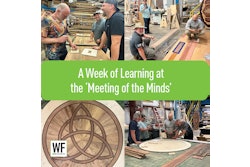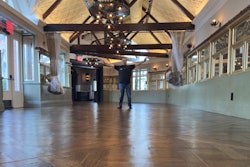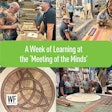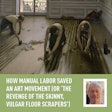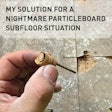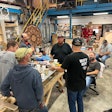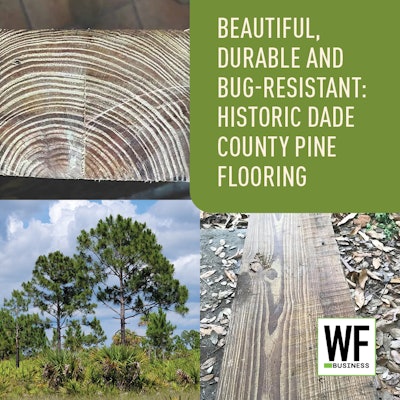
I received a call from a contractor renovating the wood floors in a late-1900s-built home in Palm Beach, Fla. He said they removed the decades-old wool carpet from the upstairs portion of the house to find pine floors in good condition, considering their age. He wasn’t sure what type of pine it was and asked if I could swing by and take a look. I had a pretty good idea of what he was dealing with by the age of the building and his description of the floors.
When I arrived, they were removing some planks that had significant water damage. They were amazed to find how hard the wood was and how little damage there was in a 125-year-old building. My instinct was correct: The floors and quite a bit of the structure were made from Dade County pine:


Homes created out of natural hardwood were the only ones that mattered not so many years ago. The variety of materials was limited, with designs even more so, with every home being built to last for a generation. You could not look beyond Dade County pine, a wood sourced from pines growing abundantly in Southern Florida. Due to these facts, Dade County pine was harvested to near extinction. While it is banned by law to fell the precious pine trees or grow them for commercial purposes today, the demand remains the same.
Dade County pine is a type of lumber that Spanish conquistadors began using in the 1500s. It's native to South Florida, where it was once found in longleaf forests (it's a subspecies of longleaf Southern yellow pine). Dade County pine (scientific name: Pinus elliottii var. densa), has been protected from commercial logging for decades, so usable lumber is often found through reclamation, now a cottage industry due to the sheer number of homes, shops, hotels, and more that were built with this lumber. The heartwood is reddish to brown, extremely hard, and has natural protection from bugs and vermin—perfect for this sub-tropical climate. When looking for lumber for flooring repairs in Dade County pine, we often turn to river-reclaimed pine, a very close match in color, grain, and toughness.
 Dade County Pine trees.Jay Horn
Dade County Pine trees.Jay Horn
Kudos to the installers! At that time, floors were hand-nailed with cut nails, and it took a lot of skill and practice to nail this tough, dense wood without breaking the tongues. Cuts were often made with a flooring hatchet, and miters were done with a hand saw and miter box. When I started working in the wood flooring trade in the late 1960s, many mechanics were still hand-nailing and insisted they were just as fast as those using the Model 45 nailer. The Model 45 Powernailer was invented in 1946 by brothers Carl and Ed Anstett, who founded the Powernail Company. The Model 45 and the "L" Cleat Powernail made hardwood flooring installation much easier than previous methods. While the tool was introduced in the year I was born, many installers were averse to change. Sound familiar?
The demand for reclaimed Dade County pine remains at an all-time high, not merely because of its aesthetic appeal. Our forefathers had many reasons to harvest this unique wood, utilizing it for every need. The durability of the sturdy lumber that can be fashioned into several objects has held the residents of Florida in awe for hundreds of years, and the attraction for real wood does not diminish with time.
















